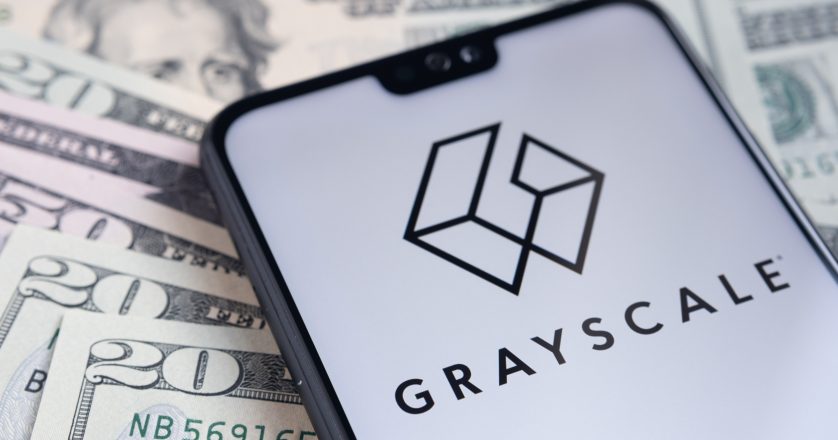Retail Investors Are Fueling The Greatest Arbitrage Opportunity in Crypto
Retail investors on U.S. OTC markets are showing a large appetite for Grayscale’s crypto assets. And institutions are happy to meet that demand.

Key Takeaways
- The premiums for Grayscale shares are running high, indicating strong retail demand.
- The leading incentive for institutional funds in Grayscale’s Bitcoin Trust GBTC is arbitrage trading.
- Despite the selling pressure from arbitrageurs, the consistent rise in AUM and premium indicates strong growth.
Share this article
Grayscale LLC Inc. is the largest cryptocurrency asset manager globally, boasting $12 billion in assets under management (AUM). Bitcoin-backed GBTC is its leading product with $9 billion in AUM.
There is a high premium on these shares, however. The average premium for GBTC since the asset’s inception has been 38.7%. Other crypto-based shares like Ethereum’s ETHE and Litecoin’s LTCN shares are witnessing higher premiums at 5,900%.
The reason for these high premiums?
A common misconception among retail investors.
Grayscale’s High Premiums and Institutional Arbitrage
Institutional investors lock their Bitcoin or other cryptocurrencies for equivalent shares of GBTC or spot buying at the net asset value (NAV). After a six month lock-up period, these investors can sell their shares on the market (there is no redemption program).
The lock-up period for other crypto-assets like Ethereum, Litecoin, and XRP is one year. These lock-up periods create an enticing arbitrage opportunity for institutions. And in pursuing this opportunity, firms are creating a steady supply of Grayscale shares for retail markets.
Unpacking this dynamic is simple.
To begin the trade, institutional funds borrow Bitcoin at a certain interest rate, called “r.”
The fund then hedges the exposure via an options contract or shorting on the futures market as insurance against negative moves in Bitcoin’s price.
Further, they create units of GBTC at the trust by exchanging the borrowed BTC with an equal number of GBTC shares. The institutions can also buy GBTC at the net asset value (NAV) price.
The new shares are then sold at the market value with a premium after the end of the lock-up period, where the premium is the amount that retail investors pay on top of the NAV.
The above trade is profitable only if the premium is greater than the rate “r” and other associated costs.
Over-the-counter (OTC) desks, like OTCQX® Best Market, trades in Grayscale products, which brokerage firms like Schwab and Fidelity offer to their customers.
The premium depends on two things: institutional supply and retail demand for the shares. While institutions are constantly selling to earn premiums on the no-risk arbitrage trade, retail traders are scooping GBTC in huge volumes.
The monthly trading volume of GBTC on Fidelity, a proxy for retail volumes, has surged from $100 million in September to nearly $250 million in November.
A partner at Castle Island Ventures and co-founder of Coinmetrics, Nic Carter, said in a podcast with Anthony Pompliano:
“Even though there is a constant selling pressure from the creation of units of the fund, the persistent premium shows me there is strong retail investor demand.”
There is also a risk of premiums falling in the future. Nonetheless, institutions have continued to create astonishing levels of GBTC shares in 2020. This signals bullish sentiments of institutions, despite the 6-month lock-up. Kevin Rooke, an independent researcher, shared with Crypto Briefing:
“Share growth is definitely picking up over the course of the year. In Q1 and Q2, roughly 70-80K BTC were added to the trust. Halfway through Q4, Grayscale is already ahead of 70K added.”
Altcoin Premiums
The premiums on funds like ETHE, LTCN, and XRP run much higher than GBTC. Currently, the premium for ETHE is close to 80%, and 4,500% for LTCN.
Despite the exorbitant prices, there is considerable retail demand for these shares on Fidelity and Schwab.
The reason for the high premiums is because Grayscale is a close-ended fund. Grayscale does not have a redemption program, and there is a long wait for the end of the lock-up period. This restricts the supply of these shares.
Moreover, these altcoin shares are relatively new to the market, meaning the active supply of these shares is considerably lower than GBTC.
The premiums run wild due to a shortage of these shares in the market and strong demand. The premium for Litecoin’s LTCN, for example, rose to highs of 5,874% after it recently began trading on retail markets.
ETHE’s monthly volume on Fidelity has surged from less than $1 million in the first half of 2020 to over $5 billion in November.
Ethereum’s ETHE premium was also elevated at the beginning, running as high as 3,000%. Gradually, as the institutions engaged in arbitrage trading and the supply increased, premiums have fallen to 78%.
Finally, retail is also fueling this arbitrage trade due to a misunderstanding as to what these shares actually represent. Investors often think that by purchasing ETHE and LTCN, they are holding an equivalent of 1 Ether or 1 Litecoin.
In reality, 1 ETHE represents 0.09287969 ETH, and 1 LTCN share represents 0.09336698 LTC.
It should be noted that retail investors with brokerage accounts belong to an older, much wealthier demographic than millennial investors.
However, due to their inexperience with purchasing cryptocurrencies, they prefer to keep their crypto activity in their brokerage accounts. GBTC shares also provide tax benefits and regulatory compliance.
Little do they know that they are padding the pockets of the many institutional funds entering the space for these conveniences.
Share this article
